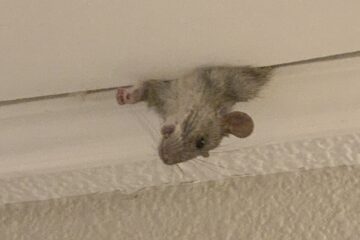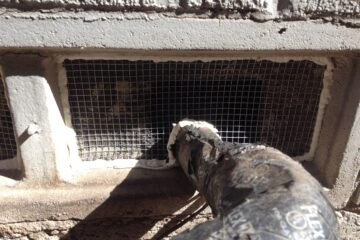Permanently excluding squirrels from your home involves coordinated steps:
Thorough Inspection
The first step is a meticulous inspection of interior and exterior to locate potential entryways. Use of ladders, attic crawlspaces, and thermal imaging helps detect gaps in siding, vents, chimneys, and cavities where squirrels access your home. Even small holes get flagged for sealing.
Installing One-Way Exclusion Doors
Before permanently sealing openings, technicians first install temporary exclusion devices allowing squirrels to exit but not re-enter. These humane devices give squirrels a chance to leave on their own before trapping any still inside. Monitoring of the doors confirms squirrel activity has ceased, signaling they’ve left the space.
Sealing All Possible Entryways
With squirrels evacuated, the exclusion phase begins by sealing holes with steel mesh, concrete, durable sealants, and other gnaw-proof barriers. Major routes get addressed first before meticulously sealing every potential gap and crack that could give squirrels toehold. Even small holes get metal mesh inserts or copper wool.
Removing Access Ladders
Trees touching the roof, wires running to elevated spaces, and other potential “squirrel ladders” get trimmed back or removed. This eliminates exterior routes giving them access to upper levels and roof entry points. Check for any other environmental factors facilitating their access.
Attic Cleanup
Nesting areas, droppings, and food stashes get removed from attics and crawlspaces. This includes cleaning up insulation or debris they’ve scattered to remove further attractants. Thorough sanitizing and deodorizing restores these spaces.
Ongoing Maintenance
Squirrels are relentless chewers, so technicians make repeat visits to check for any new nibbling attempts and reinforce weak areas. Annual inspections ensure seals remain intact. Staying vigilant with proactive maintenance ensures permanent, long-term squirrel exclusion success.




